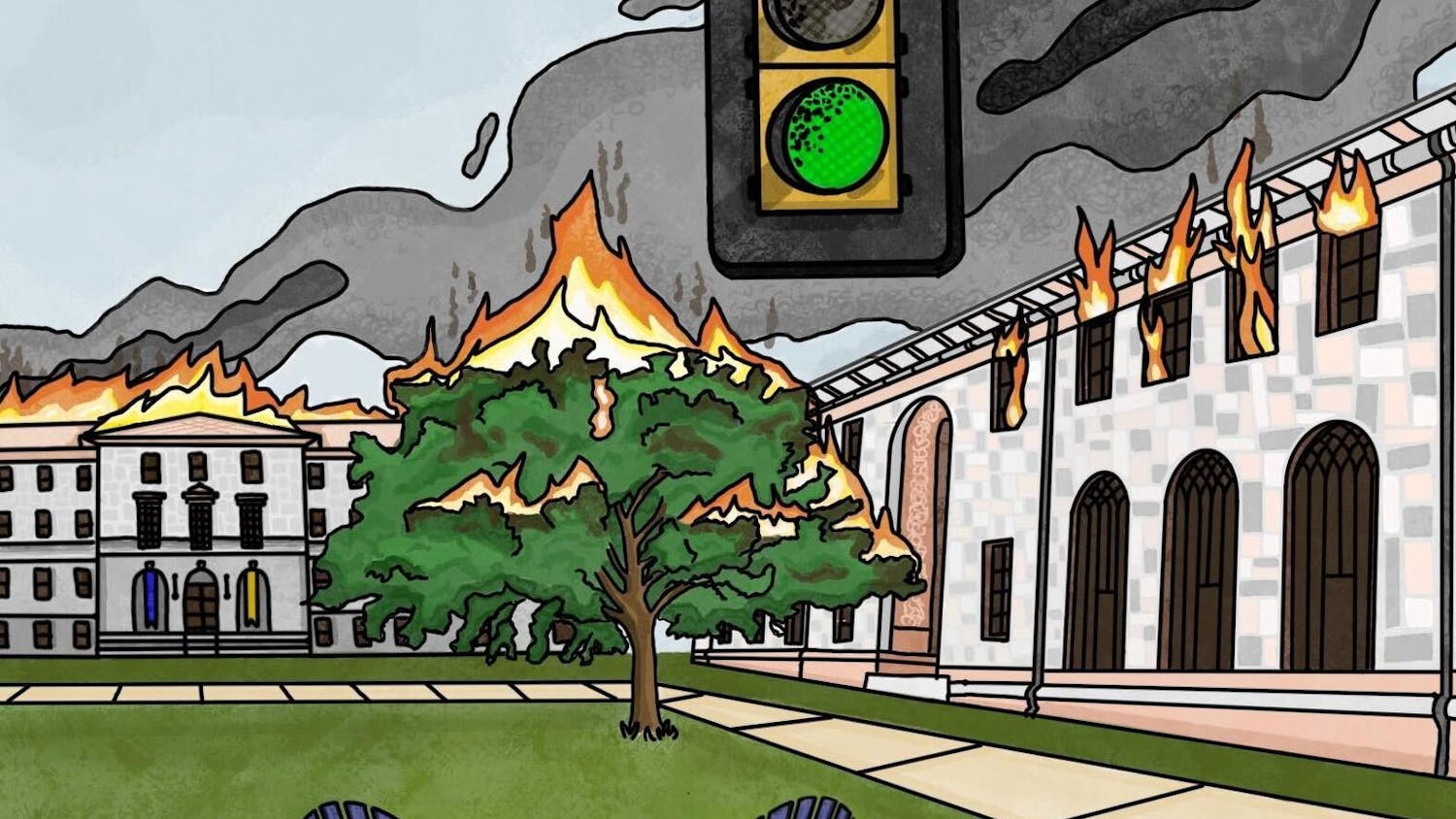As final exams continue and the cumulative stress of a tiring semester comes to its natural conclusion, one element underpins every student’s preparations: the task of remembering everything they have learned. The reality is that some classes are more memorable than others, which means students must return to their detailed — or sparse — notes. Some take notes the old-fashioned way with pen and paper, but the vast majority of students in my classes use an iPad or laptop. As we zoom into the future, students are trading out intentionality for how much stuff they can write down.
I doubt that if you were to poll college students about what they perceive to be the biggest issues of their time, note-taking methodology would make the list. Despite this omission, note-taking is one of our time's most important and overlooked issues because it is a microcosm of something much bigger: fragmented attention.
For the vast majority of my academic career, I was in the digital note-taking camp. I am an extremely fast typist, my handwriting is barely legible and I did not want to miss any crucial anecdotes or advice for my exams. Using a split-screen setup greatly hastened my workflow and productivity. But, when you handwrite notes, you must grapple with what you are learning.
Taking notes by hand is one of the most effective ways of processing and storing information for later retrieval. The physical sensation of moving a pencil or pen across a notebook activates more parts of the brain than light-speed typing can. Research shows that typing leads to “shallower processing” than analog note-taking, and several peer-reviewed studies support the view that writing with a digital or ink pen is a more effective learning and memorization tool than typing.
These insights puzzled me for the past month or so and eventually led me to this: Emory University students, like many other high-achieving students worldwide, have fallen prey to “pseudo productivity.” There seems to be some underlying ethos that in order to be productive, we need to constantly be online, clicking buttons, clearing our Outlook inbox and attending to a barrage of iMessage side conversations. In this state of constant half-attention, we cannot justify dedicating the mental energy required to sit through a 75-minute lecture on political philosophy or cellular respiration with undivided attention. Instead, we subconsciously flee from one urgent, yet unimportant, task to another, replacing purposeful learning with meaningless chores.
Thus, I tried to handwrite notes this past semester. Once this process was underway, I was amazed at both my personal educational experience and what I noticed around me for the first time. By paying more attention to my classmates instead of my computer screen, I found many of my classmates completely disengaged from the course material. I have had many lectures where I have been in a similar trance, but to look around the classroom and see everyone scrolling through Instagram or online shopping. This entire experience was nothing short of staggering — especially since we are paying thousands of dollars for education, not downtime.
I lament all the ideas I must have missed in this careless distraction. The experience of note-taking on paper was much more relaxing and wholesome. This analog and archaic way of taking notes was slower, less efficient and more time-consuming, and yet, it reaped a whole host of benefits. Each piece of text I wrote felt more purposeful, I found that I was more readily able to recall topics from class during midterms and, overall mentally, I felt more engaged throughout the lecture. By limiting the amount of content I could write down, I was forced to decide what actually mattered with split-second judgment. Only a fraction of what a professor says shows up on the final, and learning to prioritize content forces you to segment topics early on in the course based on their actual relevance.
Additionally, once I switched to handwritten notes, I felt less jittery in class. I found myself checking the hands on the clock less, and more often than not, I fell into a “flow” state before the class was suddenly over and people started to shuffle out. I noticed the professor’s words reverberating in the lecture hall, the cacophony of typing crunches after they read a new bullet point, the shuffle of shoes, the quiet hushing of side chatter and so on. The whole process was oddly calming.
At Emory, we are not immune to the stressors of world events, class gossip or the pressures of finding a job. We are also forced by life circumstances to make choices that work in the context of our own lives — sometimes it actually makes sense to work on another essay, project or some other task with a pressing deadline instead of listening in the lecture hall.
But, we do have the power to be completely present in our lives. I have found this presentness through writing with a mechanical pencil, which has transferred over into other aspects of my day-to-day life. Emory students owe it to our professors — and more importantly, ourselves — to be wholly present. With only 24 hours in a day and roughly seven or eight of them spent asleep, let us use note-taking as a reminder to be fully present — or as fully present as we physically can be — in our chaotic, shuffling lives.
Contact Ari Segal (25C) at asegal7@emory.edu.










